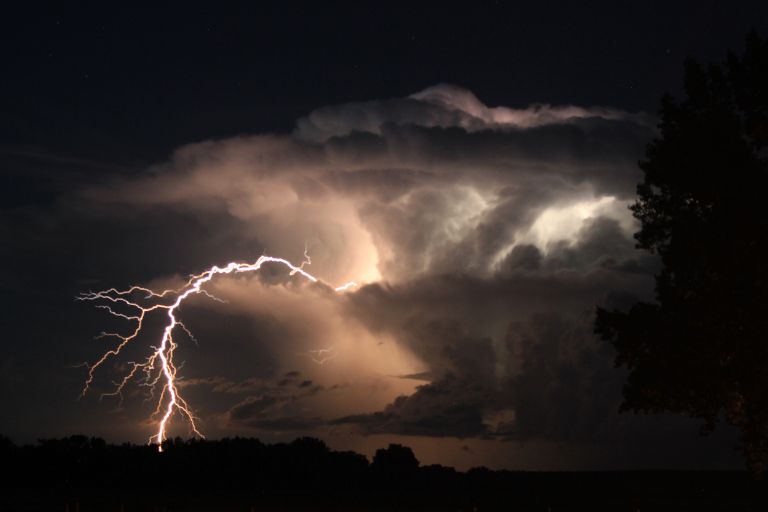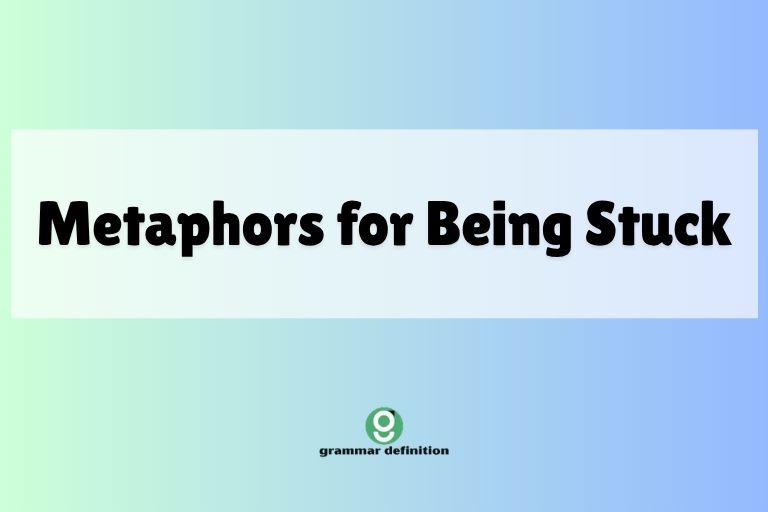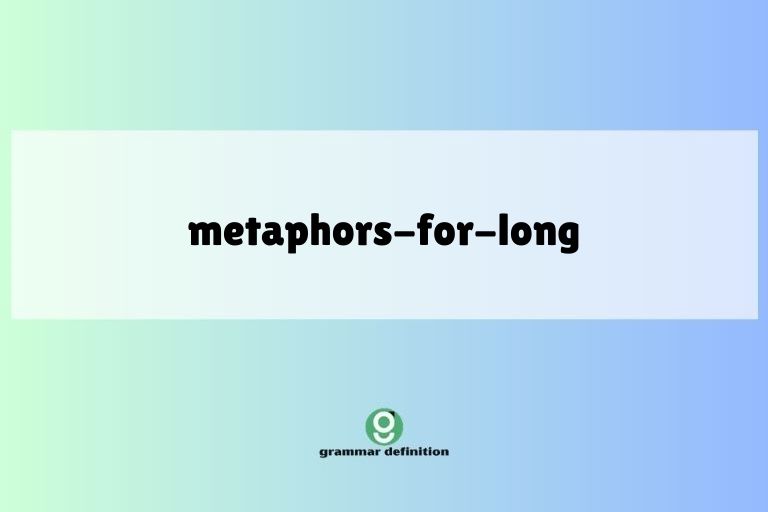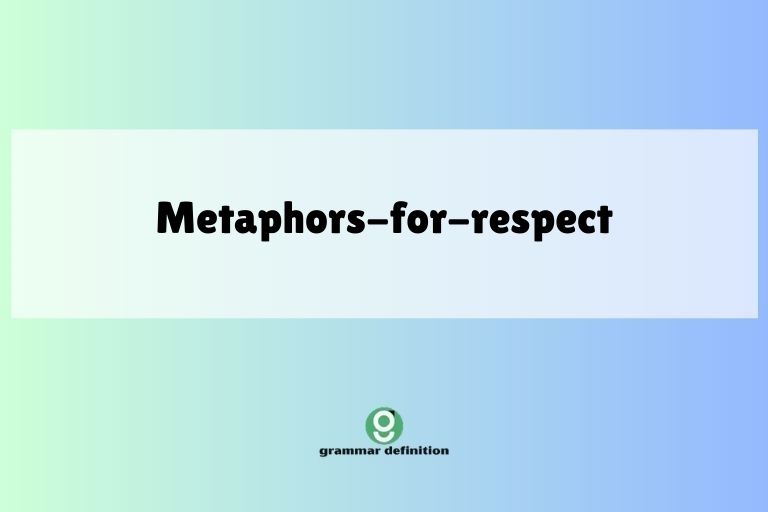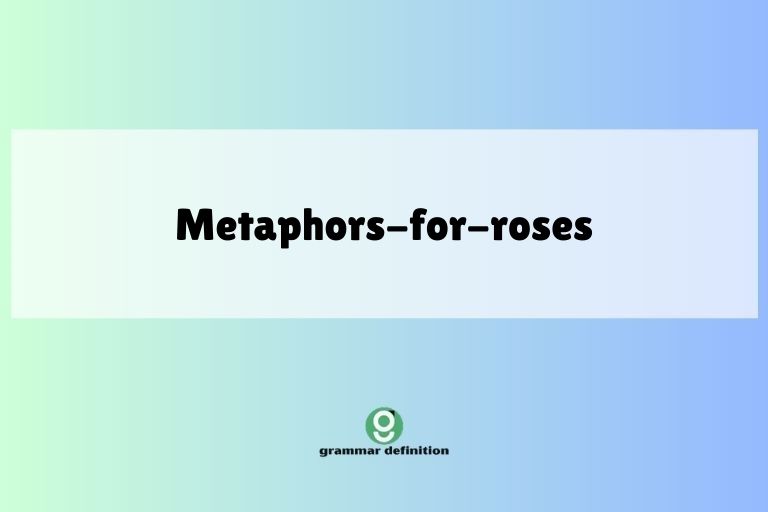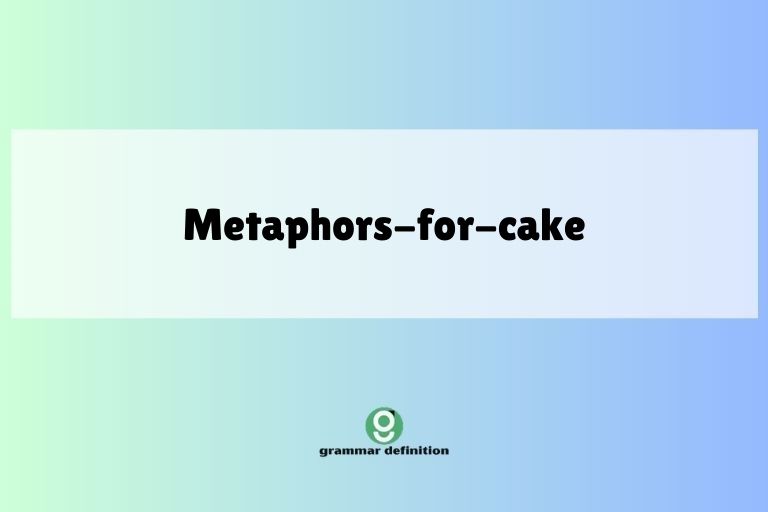Metaphors for Boring: A Comprehensive Guide
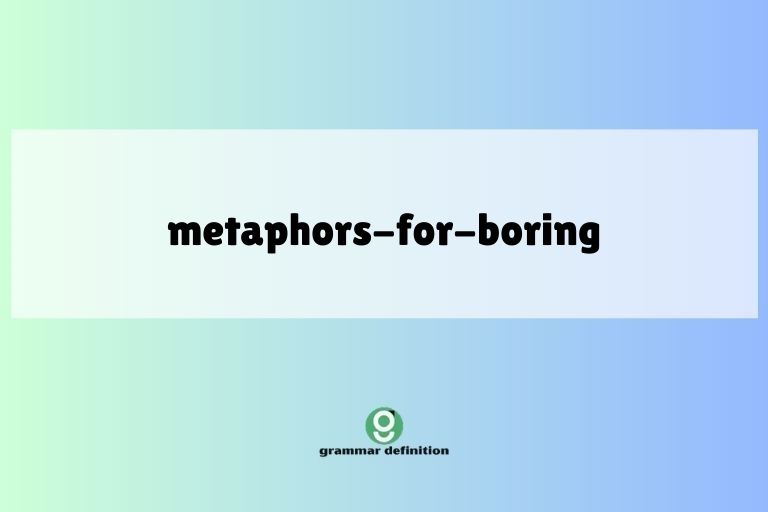
Understanding how to express the concept of “boring” in English goes beyond simply using the adjective itself. Metaphors offer a rich and nuanced way to convey the feeling of tedium, monotony, and lack of excitement.
This article delves into the various metaphors used to describe boredom, exploring their meanings, contexts, and proper usage. Whether you’re an English language learner or a native speaker looking to expand your vocabulary, this guide will provide you with the tools to express boredom in a more vivid and engaging way.
This article is designed for English language learners of all levels who want to improve their descriptive language skills. It will also benefit writers, speakers, and anyone who wants to add more color and expressiveness to their communication.
By mastering these metaphors, you can elevate your language proficiency and capture the essence of boredom with greater precision and creativity.
Table of Contents
- Introduction
- Definition of Metaphors for Boring
- Structural Breakdown of Metaphors
- Types and Categories of Metaphors for Boring
- Examples of Metaphors for Boring
- Usage Rules for Metaphors
- Common Mistakes When Using Metaphors for Boring
- Practice Exercises
- Advanced Topics: Extended Metaphors and Symbolism
- Frequently Asked Questions (FAQ)
- Conclusion
Definition of Metaphors for Boring
A metaphor is a figure of speech that directly compares two unrelated things, highlighting a shared quality or characteristic. Metaphors for “boring” are used to describe situations, events, or people that lack excitement, interest, or stimulation.
Instead of simply stating that something is boring, these metaphors use imaginative language to evoke the feeling of boredom in a more vivid and relatable way. These metaphors often draw on sensory experiences (like textures, colors, or physical states) to express the abstract concept of boredom.
The function of these metaphors is to add depth and color to our language, making it more engaging and expressive. By using a metaphor, we can not only convey the feeling of boredom but also create a specific image or sensation in the listener’s or reader’s mind.
The context in which these metaphors are used is broad, ranging from everyday conversations to literary works. They can be applied to describe anything from a tedious lecture to a monotonous job or a dull social gathering.
Structural Breakdown of Metaphors
The structure of a metaphor typically involves two key elements: the tenor and the vehicle. The tenor is the subject being described (in this case, “boring”), and the vehicle is the object or concept used to represent it. The connection between the tenor and the vehicle is based on a shared characteristic or quality. For example, in the metaphor “The lecture was a desert,” the tenor is the lecture, and the vehicle is a desert. The shared characteristic is the lack of stimulation or sustenance, making the lecture feel barren and lifeless.
Metaphors can be expressed in various grammatical forms, including:
- Noun phrases: “a snooze fest,” “a wet blanket”
- Verb phrases: “watching paint dry,” “like pulling teeth”
- Adjectives: (less common directly as a metaphor itself, but can contribute to a metaphorical description) “lifeless,” “stagnant”
- Similes: (technically not metaphors, but closely related) “as dull as dishwater,” “as exciting as watching grass grow”
Understanding the structural components of a metaphor allows you to analyze and appreciate its meaning more effectively. It also helps you create your own metaphors by identifying the key qualities of the subject you want to describe and finding a vehicle that shares those qualities.
Types and Categories of Metaphors for Boring
Metaphors for boredom can be categorized based on the types of imagery they evoke. Here are some common categories:
Physical State Metaphors
These metaphors relate boredom to physical sensations such as heaviness, numbness, or paralysis. They often describe the feeling of being drained or weighed down by tedium.
Weather-Related Metaphors
These metaphors use weather conditions like fog, drizzle, or stillness to represent the dullness and lack of excitement. They often convey a sense of stagnation and oppressiveness.
Texture-Based Metaphors
These metaphors employ textures like sandpaper, cardboard, or cotton to describe the rough, bland, or monotonous nature of something boring. They appeal to the sense of touch to evoke the feeling of tedium.
Color-Associated Metaphors
These metaphors use colors like gray, beige, or pale white to represent the lack of vibrancy and stimulation. They often convey a sense of blandness and uniformity.
Motion-Related Metaphors
These metaphors relate boredom to a lack of movement, such as standing still, being stuck in mud, or watching something very slow. They emphasize the absence of progress or excitement.
Life and Death Metaphors
These stronger metaphors associate boredom with lifelessness, stagnation, or even a sense of death. They convey the feeling of being drained of energy and enthusiasm.
Food-Related Metaphors
These metaphors use bland or tasteless foods to describe boredom. They often evoke a sense of dissatisfaction and lack of flavor.
Examples of Metaphors for Boring
The following tables provide examples of metaphors for “boring,” categorized by the types described above. Each table contains a variety of examples to illustrate the different ways these metaphors can be used.
The first table showcases metaphors that associate boredom with physical states. These metaphors often describe the feeling of being weighed down or paralyzed by tedium.
| Category | Metaphor | Example Sentence |
|---|---|---|
| Physical State | A lead weight | The meeting was a lead weight on my afternoon. |
| Physical State | A long, drawn-out yawn | The movie felt like a long, drawn-out yawn. |
| Physical State | A heavy blanket | The speaker’s voice was like a heavy blanket, smothering any interest. |
| Physical State | Stuck in treacle | Trying to understand the instructions was like being stuck in treacle. |
| Physical State | A dull ache | The presentation was a dull ache in my brain. |
| Physical State | Brain fog | The lecture induced a thick brain fog. |
| Physical State | A sedative | His monotone voice was like a sedative. |
| Physical State | A slow drip | The news trickled out like a slow drip, each drop more tedious than the last. |
| Physical State | A prolonged sigh | The play was a prolonged sigh of boredom. |
| Physical State | Mind-numbing | The paperwork was mind-numbing in its complexity and repetition. |
| Physical State | Draining the life out of me | Listening to him complain was draining the life out of me. |
| Physical State | A slow burn of tedium | The project was a slow burn of tedium. |
| Physical State | Like wading through mud | Reading the report was like wading through mud. |
| Physical State | A constant drone | The professor’s voice was a constant drone. |
| Physical State | A mental fog | The repetitive tasks created a mental fog. |
| Physical State | Like watching time stand still | Waiting for the results felt like watching time stand still. |
| Physical State | A stupor | The meeting induced a stupor of boredom. |
| Physical State | A monotonous hum | The machinery emitted a monotonous hum. |
| Physical State | A state of inertia | The conference left me in a state of inertia. |
| Physical State | A slow suffocation of interest | The endless details were a slow suffocation of interest. |
| Physical State | Like being trapped in amber | The conversation felt like being trapped in amber. |
| Physical State | A paralyzing boredom | The lecture induced a paralyzing boredom. |
| Physical State | A heavy cloak of tedium | The day wore a heavy cloak of tedium. |
| Physical State | A slow erosion of enthusiasm | The constant delays were a slow erosion of enthusiasm. |
This next table illustrates metaphors related to weather, using conditions like fog, drizzle, or stillness to convey the dullness of something.
| Category | Metaphor | Example Sentence |
|---|---|---|
| Weather | A thick fog | The presentation was a thick fog of jargon and meaningless statistics. |
| Weather | A light drizzle | The comedian’s jokes were a light drizzle of mild amusement. |
| Weather | A still pond | The town felt like a still pond, untouched by excitement. |
| Weather | An overcast sky | The atmosphere at the party was like an overcast sky. |
| Weather | A stagnant swamp | The project became a stagnant swamp of bureaucracy. |
| Weather | A gray cloud | The news cast a gray cloud over our spirits. |
| Weather | A cold front | His attitude was like a cold front, chilling the atmosphere. |
| Weather | A breathless calm | The waiting room was filled with a breathless calm. |
| Weather | A perpetual twilight | The city seemed to exist in a perpetual twilight. |
| Weather | A windless day | The debate was a windless day, with no new ideas emerging. |
| Weather | A heavy mist | A heavy mist of routine settled over their lives. |
| Weather | A dreary downpour | The lecture was a dreary downpour of facts. |
| Weather | A season of drought | Creativity suffered a season of drought. |
| Weather | Under a pall of gloom | The town lived under a pall of gloom. |
| Weather | A blanket of stillness | A blanket of stillness covered the landscape. |
| Weather | A frozen landscape | The conversation was a frozen landscape of polite phrases. |
| Weather | A lifeless breeze | A lifeless breeze stirred nothing. |
| Weather | Beneath a leaden sky | They lived beneath a leaden sky of monotony. |
| Weather | A dim haze | A dim haze of apathy filled the room. |
| Weather | A sunless day | The project was a sunless day of drudgery. |
| Weather | A gray drizzle of boredom | The presentation was a gray drizzle of boredom. |
| Weather | A monotonous patter of rain | The speaker’s voice was a monotonous patter of rain. |
| Weather | A still and silent night | The evening was a still and silent night, devoid of any excitement. |
| Weather | An oppressive humidity of boredom | The meeting was an oppressive humidity of boredom. |
The following table provides examples of metaphors that relate to textures, using words like sandpaper, cardboard, or cotton to describe the feeling of boredom.
| Category | Metaphor | Example Sentence |
|---|---|---|
| Texture | Sandpaper | The speaker’s voice was like sandpaper on my ears. |
| Texture | Cardboard | The characters in the book were as flat as cardboard. |
| Texture | Cotton wool | The atmosphere was like cotton wool, muffling any excitement. |
| Texture | Velvet | The politician’s words were velvet, smooth but ultimately meaningless. |
| Texture | Stale bread | The jokes were as dry as stale bread. |
| Texture | Rough wool | The day was rough wool against my skin. |
| Texture | Tasteless putty | The conversation was tasteless putty in my mouth. |
| Texture | A rough patch | The project was a rough patch in an otherwise smooth year. |
| Texture | A dull thud | His comments landed with a dull thud. |
| Texture | A flat note | The meeting ended on a flat note. |
| Texture | A grainy film | The memories of the event are like a grainy film. |
| Texture | A coarse fabric | Routine was a coarse fabric woven into their lives. |
| Texture | A brittle shell | The conversation was trapped in a brittle shell of politeness. |
| Texture | A lifeless husk | The team had become a lifeless husk. |
| Texture | A paper-thin plot | The movie had a paper-thin plot. |
| Texture | A smooth, empty surface | The discussion was a smooth, empty surface, reflecting nothing. |
| Texture | Like chewing on sawdust | Listening to him talk was like chewing on sawdust. |
| Texture | A bland canvas | The day was a bland canvas, waiting for something to happen. |
| Texture | A hard, unyielding surface | The facts were a hard, unyielding surface. |
| Texture | A featureless plain | The landscape of the presentation was a featureless plain. |
| Texture | A layer of dust | A layer of dust settled over the project. |
| Texture | A rough, dry sponge | His mind felt like a rough, dry sponge. |
| Texture | A seamless void | The evening stretched out like a seamless void. |
| Texture | An unyielding stone | His silence was an unyielding stone. |
This table focuses on metaphors that use colors to describe boredom, often using shades of gray, beige, or pale white to represent a lack of vibrancy.
| Category | Metaphor | Example Sentence |
|---|---|---|
| Color | Gray | The day was gray and uneventful. |
| Color | Beige | The conference room was a beige box of boredom. |
| Color | Pale white | Her face was pale white with tedium. |
| Color | Muddy brown | The discussion was a muddy brown of vague ideas. |
| Color | A washed-out hue | The party had a washed-out hue. |
| Color | A colorless existence | They lived a colorless existence. |
| Color | A faded photograph | Memories of the event were like a faded photograph. |
| Color | A monochrome world | His life was a monochrome world of routine. |
| Color | A bleached landscape | The meeting was a bleached landscape of corporate speak. |
| Color | A sepia tone | The town seemed to exist in a sepia tone. |
| Color | A dim palette | The conversation used a dim palette of polite phrases. |
| Color | An ashen sky | An ashen sky hung over the proceedings. |
| Color | A muted tone | The event was a muted tone of disappointment. |
| Color | A whitewashed wall | Her expression was a whitewashed wall. |
| Color | A dull, brown study | The research was a dull, brown study. |
| Color | A faded memory | The experience became a faded memory. |
| Color | A muted gray | The atmosphere was a muted gray of indifference. |
| Color | A pale imitation | The sequel was a pale imitation of the original. |
| Color | An off-white shade | The presentation was an off-white shade of boredom. |
| Color | A flat, gray canvas | The day stretched out like a flat, gray canvas. |
| Color | Drained of color | The event was drained of color and excitement. |
| Color | A shadowy existence | He lived a shadowy existence. |
| Color | A pale shadow | The project was a pale shadow of its former self. |
| Color | A leaden hue | The sky was a leaden hue, mirroring the mood. |
This final table includes metaphors that use motion or lack thereof to describe boredom, highlighting the absence of progress or excitement.
| Category | Metaphor | Example Sentence |
|---|---|---|
| Motion | Standing still | The project felt like standing still in a fast-moving world. |
| Motion | Stuck in mud | My career felt like being stuck in mud. |
| Motion | Watching paint dry | The lecture was like watching paint dry. |
| Motion | Going nowhere fast | The discussion was going nowhere fast. |
| Motion | A slow crawl | The day was a slow crawl towards the weekend. |
| Motion | A standstill | Negotiations reached a standstill. |
| Motion | A dead end | The investigation reached a dead end. |
| Motion | A vicious cycle | They were trapped in a vicious cycle of routine. |
| Motion | A treadmill | His job was a treadmill of endless tasks. |
| Motion | A slow descent | The project was a slow descent into chaos. |
| Motion | A downward spiral | The company was in a downward spiral. |
| Motion | A long, slow march | The week was a long, slow march to Friday. |
| Motion | Treading water | They were treading water in a sea of uncertainty. |
| Motion | Running in place | Her career felt like running in place. |
| Motion | A slow burn | The frustration was a slow burn. |
| Motion | A gradual fade | Their enthusiasm suffered a gradual fade. |
| Motion | A slow leak | The energy was a slow leak from the team. |
| Motion | A prolonged pause | The conversation was a prolonged pause of awkwardness. |
| Motion | A silent drift | They were in a silent drift away from each other. |
| Motion | A slow decline | The city suffered a slow decline. |
| Motion | A slow, grinding halt | The project came to a slow, grinding halt. |
| Motion | A stagnant pool | The town was a stagnant pool, untouched by progress. |
| Motion | A never-ending loop | His life was a never-ending loop of the same activities. |
| Motion | A slow-motion disaster | The event was a slow-motion disaster. |
Usage Rules for Metaphors
When using metaphors, it’s crucial to ensure they are appropriate and effective. Here are some key rules to follow:
- Clarity: The metaphor should be easily understood. Avoid obscure or overly complex comparisons.
- Relevance: The connection between the tenor and the vehicle should be clear and logical. The shared characteristic should be apparent.
- Originality: While common metaphors can be effective, strive for originality to make your language more engaging and memorable.
- Consistency: Avoid mixing metaphors within the same sentence or paragraph. Maintain a consistent image or theme.
- Context: Consider the context in which you are using the metaphor. Ensure it is appropriate for the audience and the situation.
- Overuse: Avoid overusing metaphors, as this can make your language sound contrived or unnatural. Use them sparingly for maximum impact.
It’s also important to be aware of dead metaphors, which are metaphors that have become so common that they have lost their figurative meaning and are now used as literal expressions (e.g., “the heart of the matter”). While dead metaphors are generally acceptable, avoid using them excessively or relying on them as your only form of figurative language.
Common Mistakes When Using Metaphors for Boring
Here are some common mistakes to avoid when using metaphors for “boring”:
| Mistake | Incorrect Example | Correct Example | Explanation |
|---|---|---|---|
| Mixed Metaphor | The lecture was a desert drowning in a sea of information. | The lecture was a desert, devoid of any interesting content. | Avoid combining unrelated images or ideas in a single metaphor. |
| Unclear Metaphor | The meeting was a purple elephant. | The meeting was a heavy weight on everyone’s time. | Ensure the connection between the tenor and the vehicle is clear and understandable. |
| Overused Metaphor | The presentation was like watching paint dry. | The presentation was a monotonous drone that lulled everyone to sleep. | Avoid using clichés or overused metaphors. |
| Inappropriate Metaphor | The funeral was a snooze fest. | The funeral was a somber and reflective occasion. | Consider the context and audience when choosing a metaphor. |
| Literal Interpretation | The project was a slow burn, so we lit a fire under it. | The project was a slow burn, requiring patience and persistence. | Avoid taking a metaphor too literally. |
Practice Exercises
Test your understanding of metaphors for “boring” with these practice exercises.
Exercise 1: Identify the Metaphor
Identify the metaphor used to describe boredom in each sentence.
- The movie was a long, drawn-out yawn.
- The meeting was a beige box of boredom.
- The lecture felt like wading through mud.
- The project was a slow burn of tedium.
- The speaker’s voice was like sandpaper on my ears.
- The day was gray and uneventful.
- The conversation was tasteless putty in my mouth.
- His job was a treadmill of endless tasks.
- The town felt like a still pond, untouched by excitement.
- The atmosphere at the party was like an overcast sky.
Answers
- A long, drawn-out yawn
- A beige box of boredom
- Wading through mud
- A slow burn of tedium
- Sandpaper on my ears
- Gray
- Tasteless putty
- A treadmill of endless tasks
- A still pond
- An overcast sky
Exercise 2: Create a Metaphor
Write a sentence using a metaphor to describe each of the following boring situations:
- A long commute
- A repetitive task at work
- A dull party
- A boring book
- A tedious phone call
- An uninspired presentation
- A monotonous song
- A slow-moving line
- A dry history lesson
- An uneventful day
Example Answers
- The commute was a daily sentence in traffic court.
- The repetitive task was a soul-crushing loop of monotony.
- The party was a graveyard of polite conversation.
- The book was a leaden tome that weighed down my thoughts.
- The phone call was a drawn-out drone that tested my patience.
- The presentation was a desert of uninspired ideas.
- The song was a monotonous hum that grated on my nerves.
- The line was a slow-moving river of frustration.
- The history lesson was a dry and dusty archive of dates.
- The day was a blank canvas, devoid of any excitement.
Exercise 3: Correct the Mixed Metaphor
Rewrite each sentence to correct the mixed metaphor.
- The project was a slow burn drowning in paperwork.
- The meeting was a beige box overflowing with red tape.
- The lecture was like sandpaper stuck in the mud.
- His career was a treadmill covered in a gray cloud.
- The conversation was tasteless putty going nowhere fast.
- The book was a long yawn stuck in treacle.
- The party was a still pond of sandpaper.
- The presentation was a lead weight fading into the fog.
- The day was a treadmill of colorless paint drying.
- The town was a beige box of cotton wool going nowhere.
Example Answers
- The project was a slow burn, requiring patience and careful attention.
- The meeting was a beige box filled with endless paperwork.
- The lecture was like sandpaper, grating on everyone’s nerves. Or: The lecture felt like wading through mud.
- His career was a treadmill of endless tasks. Or: His career was under a gray cloud of uncertainty.
- The conversation was tasteless putty, offering no substance. Or: The conversation was going nowhere fast, stuck in a loop.
- The book was a long yawn that couldn’t hold my attention. Or: The book was stuck in treacle, difficult to get through.
- The party was a still pond, untouched by any excitement. Or: The party was like sandpaper, grating on everyone’s nerves.
- The presentation was a lead weight, dragging down the mood. Or: The presentation was fading into the fog of obscurity.
- The day was a treadmill of monotonous tasks. Or: The day was colorless, like watching paint dry.
- The town was a beige box, devoid of any vibrancy. Or: The town was like cotton wool, muffling any excitement and going nowhere.
Advanced Topics: Extended Metaphors and Symbolism
Beyond simple metaphors, you can use extended metaphors to develop a more complex and sustained comparison throughout a piece of writing. An extended metaphor carries on the comparison for several sentences or even paragraphs, creating a richer and more nuanced effect. For example, instead of just saying “The project was a slow burn,” you could extend the metaphor by describing the different stages of the burn, the resources needed to keep it going, and the potential for it to either smolder out or erupt into a blaze.
Symbolism is another advanced technique that involves using an object, person, or idea to represent something else. Symbols can be used to convey the feeling of boredom in a more subtle and evocative way. For example, a character repeatedly winding a clock could symbolize the monotony and tedium of their life. Understanding and using extended metaphors and symbolism can significantly enhance your writing and communication skills.
Frequently Asked Questions (FAQ)
- What is the difference between a metaphor and a simile?
A metaphor directly compares two things, while a simile uses “like” or “as” to make the comparison. For example, “The lecture was a desert” is a metaphor, while “The lecture was as dry as a desert” is a simile.
- How can I come up with original metaphors for “boring”?
Think about the qualities or characteristics of boredom, such as lack of excitement, monotony, or stagnation. Then, brainstorm objects, concepts, or experiences that share those qualities. Consider sensory details (textures, colors, sounds) to make your metaphors more vivid.
- Is it okay to use clichés when describing boredom?
While clichés can be effective in certain contexts, it’s generally better to avoid them and strive for originality. Overused metaphors can make your language sound uninspired and predictable.
- How many metaphors should I use in a piece of writing?
There is no fixed rule, but it’s important to use metaphors sparingly and strategically. Overusing metaphors can make your writing sound contrived or unnatural. Use them when they add depth, color, or emphasis to your message.
- Can a metaphor be used in any type of writing?
Metaphors can be used in various types of writing, including creative writing, journalism, and even academic writing. However, it’s important to consider the context and audience and choose metaphors that
are appropriate and effective.
Conclusion
Mastering the art of using metaphors to describe boredom can significantly enhance your communication skills and add depth and color to your language. By understanding the different types of metaphors, following the usage rules, and avoiding common mistakes, you can effectively convey the feeling of boredom in a more vivid and engaging way.
Whether you’re an English language learner or a native speaker, the ability to use metaphors creatively will empower you to express yourself with greater precision and impact. Keep practicing and experimenting with different metaphors to discover your own unique voice and style.

